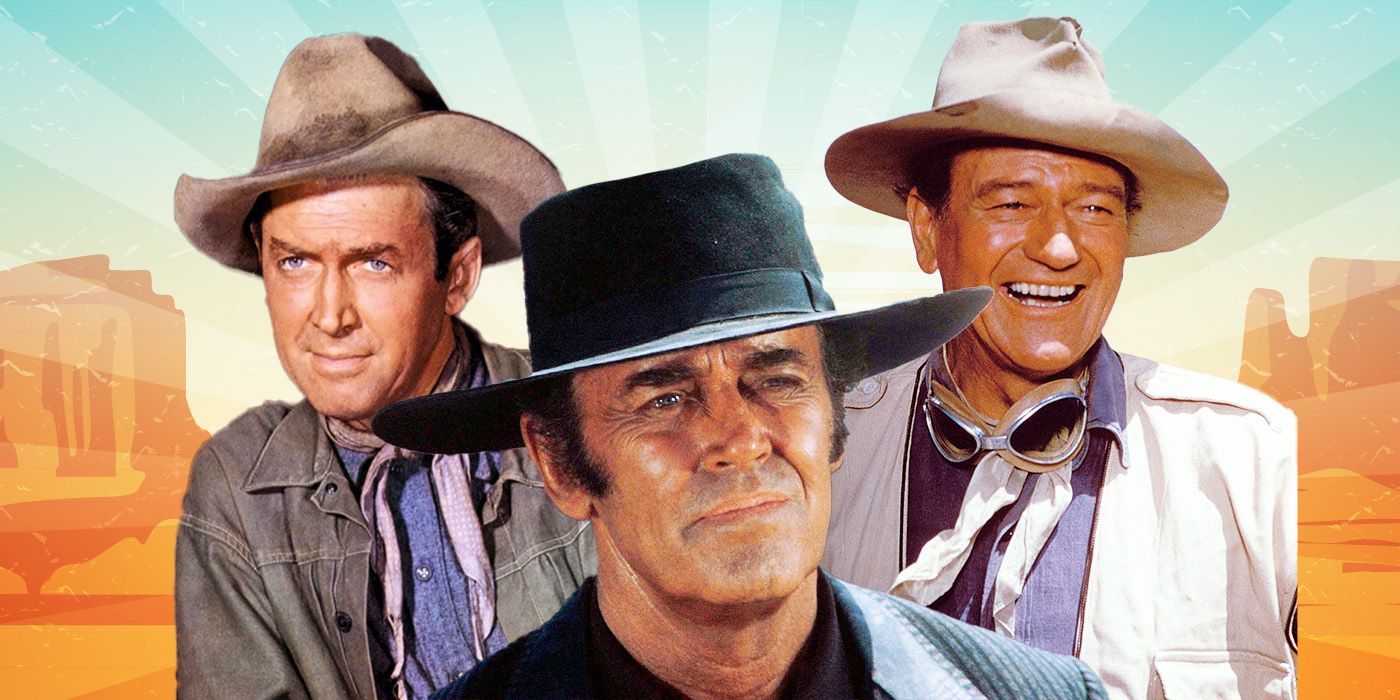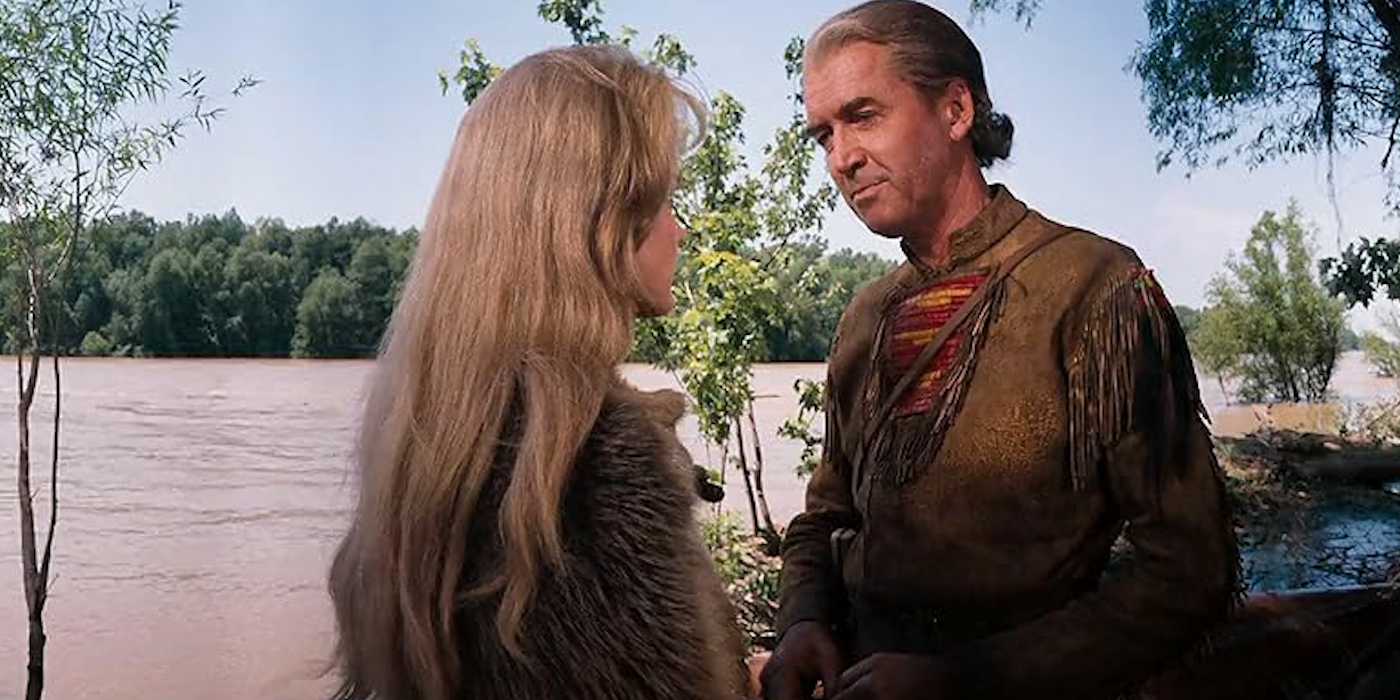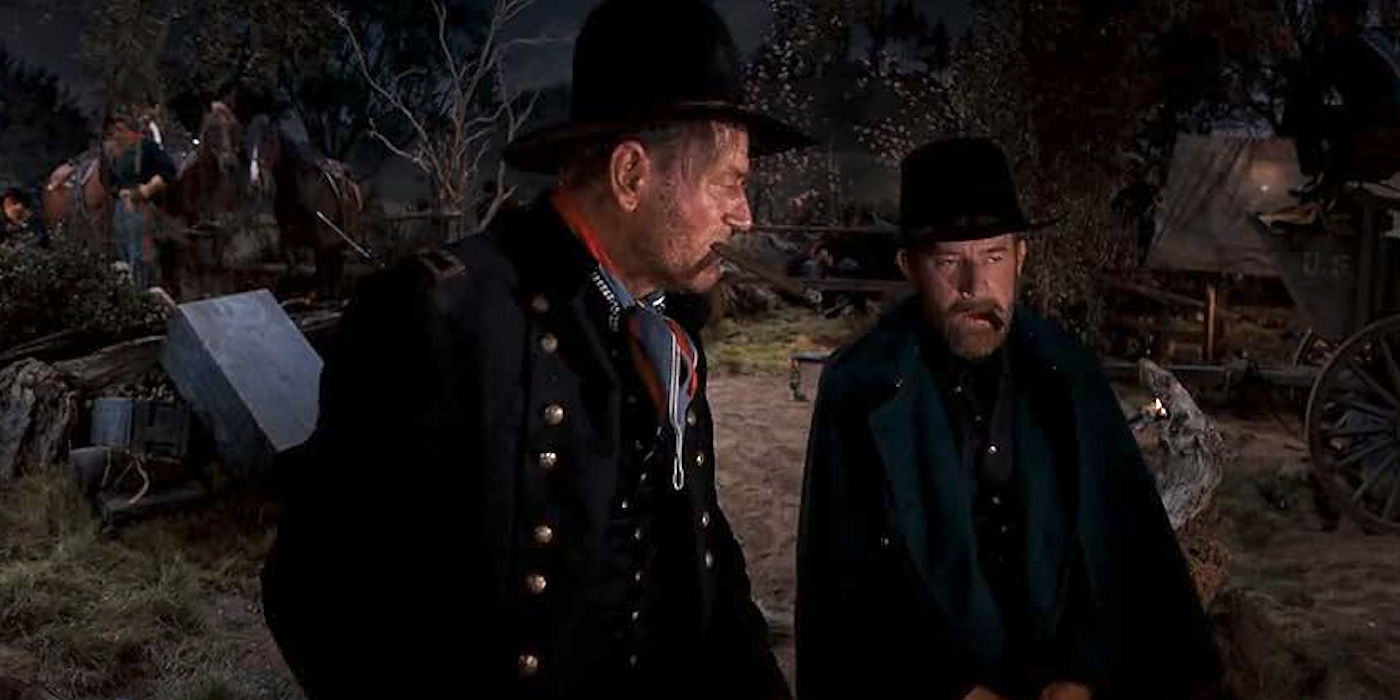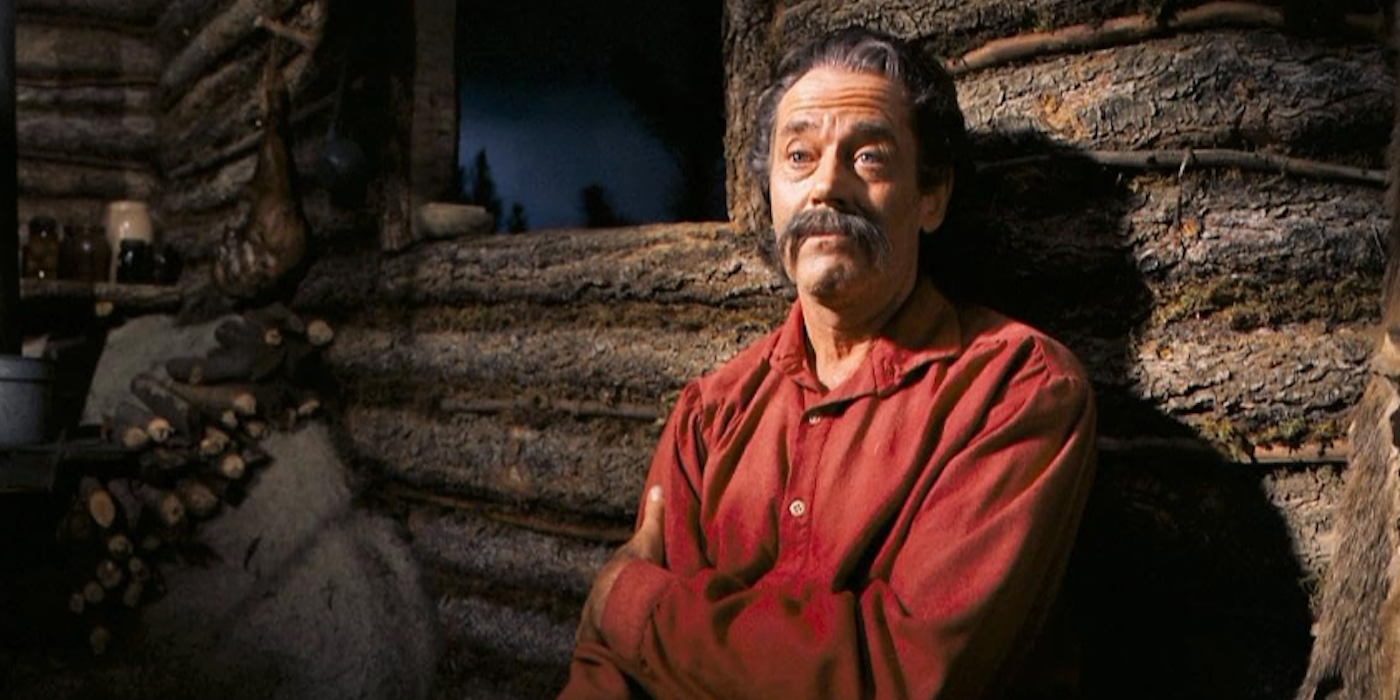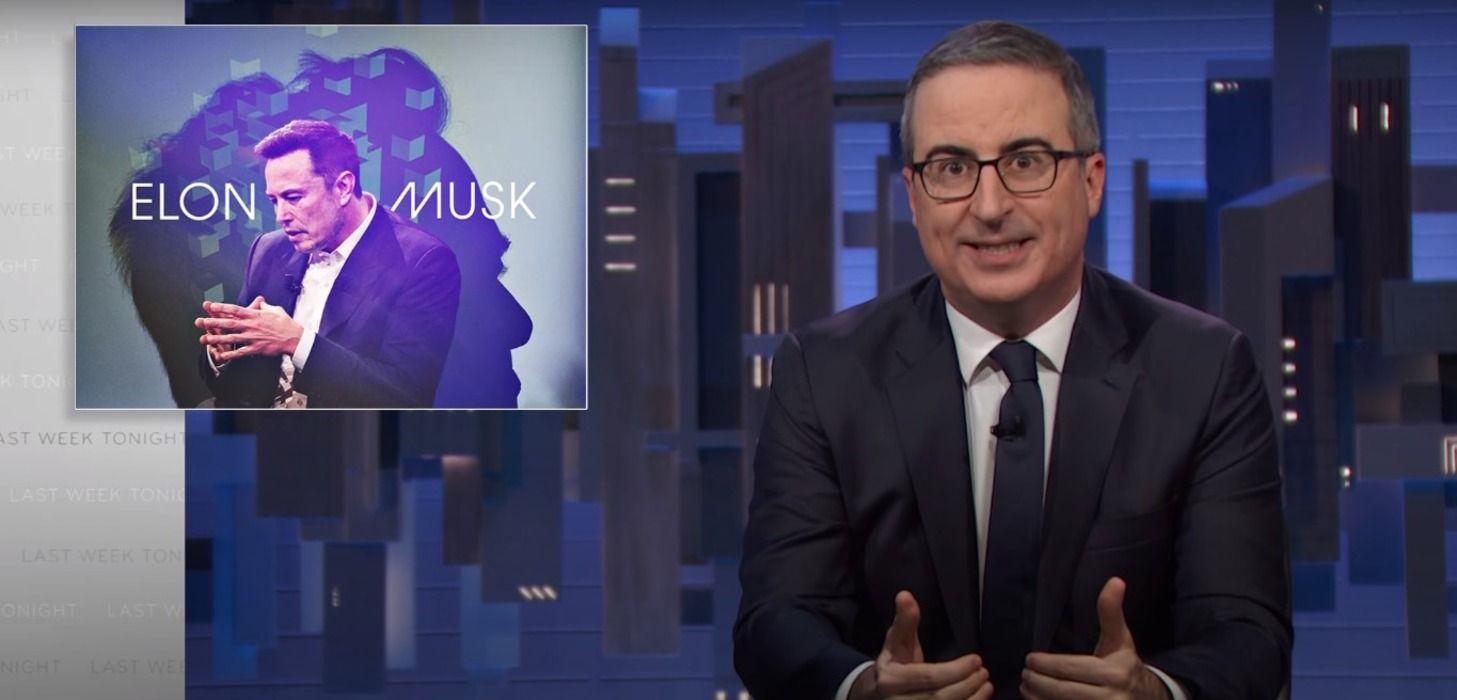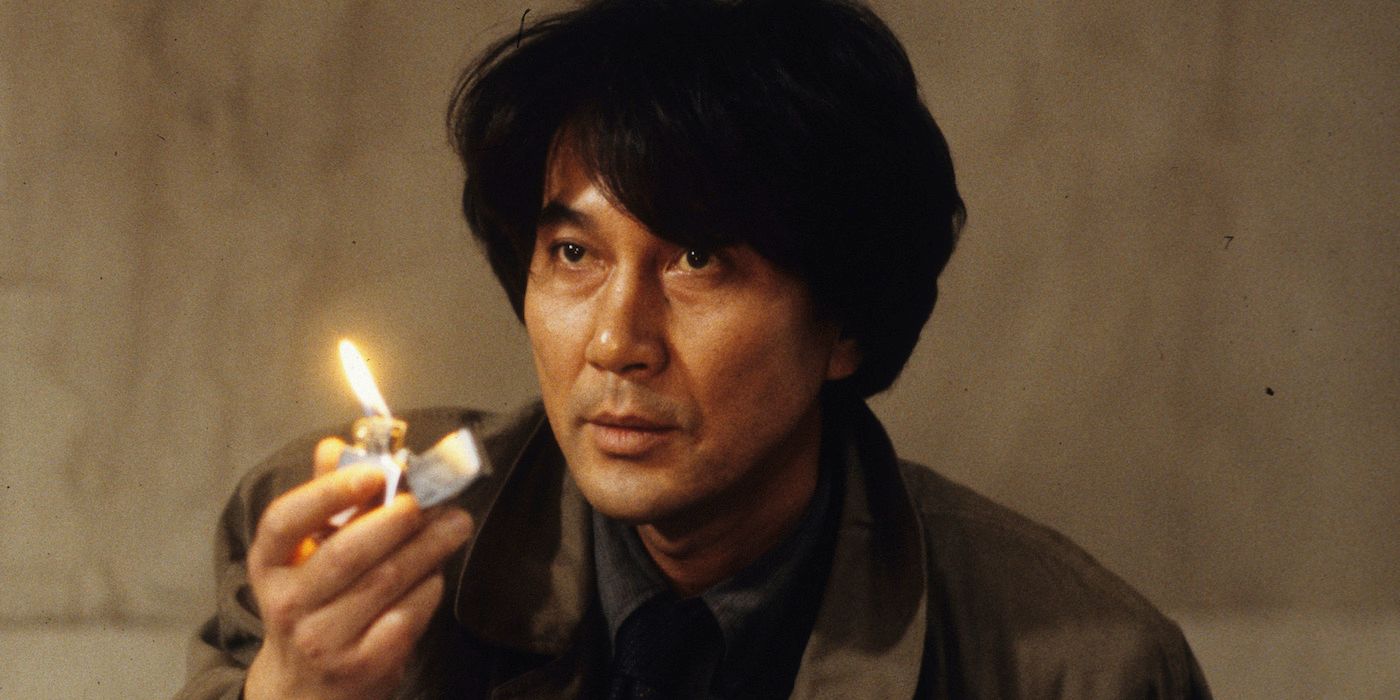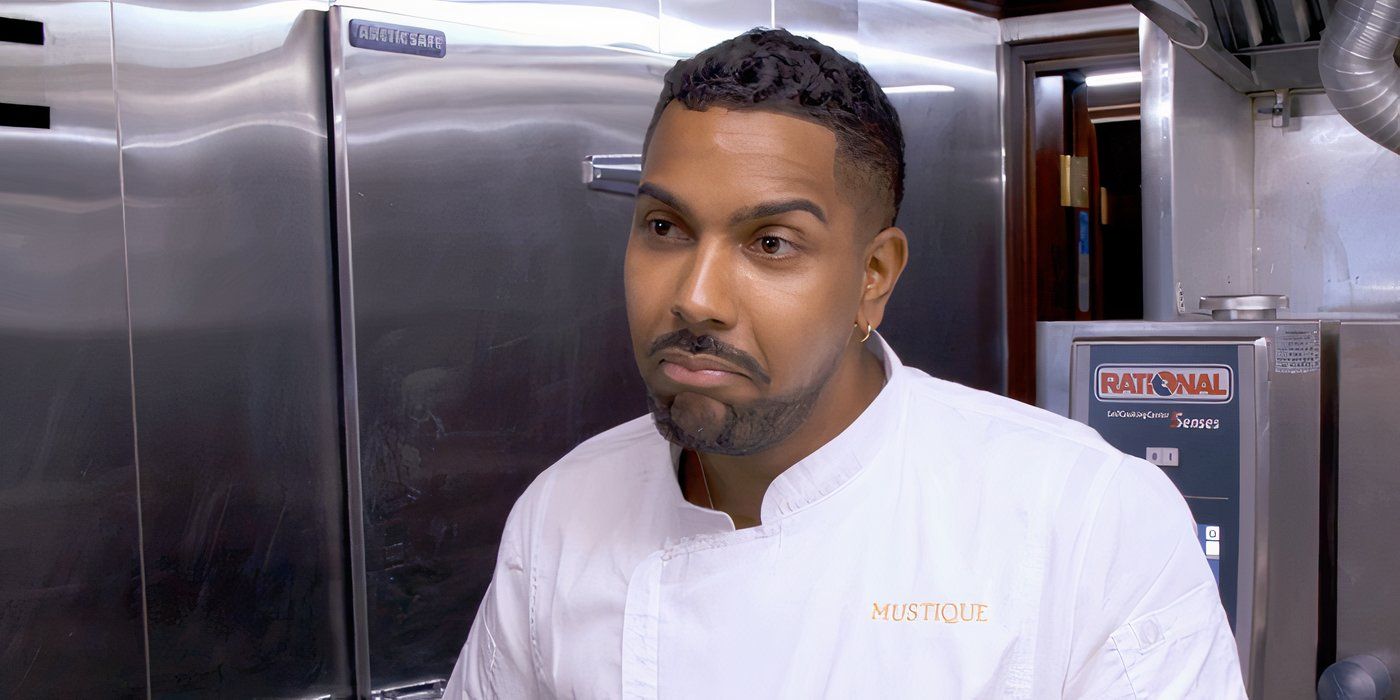The Big Picture
- John Wayne, Jimmy Stewart, and Henry Fonda appeared together for the first and last time in the 1962 classic film How the West Was Won.
- How the West Was Won is an epic family saga that spans decades of Westward expansion, covering significant events in American history.
- The film was the first-ever full-length feature film to use the Cinerama process, a pioneering widescreen technology.
There is no doubt that John Wayne, Jimmy Stewart, and Henry Fonda are three of Hollywood’s greatest stars. They individually made many classics but rarely worked together. But did you know that there is a Western that the trio appeared in together? Although they didn’t meet onscreen, the threesome appeared together for the first and last time in the star-studded triple Oscar-winning 1962 classic, How the West Was Won. This film had the unique distinction of being directed by three of Hollywood’s best directors, who also shared the honor of making the first-ever full-length feature film using the Cinerama process. How the West Was Won comprised five interrelated segments, with Henry Hathaway directing three of them, while John Ford and George Marshall directed one segment each.
How the West Was Won
A family saga covering several decades of Westward expansion in the 19th century, including the Gold Rush, the Civil War, and the building of the railroads.
- Release Date
- February 20, 1963
- Director
- John Ford , Henry Hathaway , George Marshall , Richard Thorpe
- Cast
- Carroll Baker , Lee J. Cobb , Henry Fonda , Carolyn Jones , Karl Malden , gregory peck
- Rating
- G
- Runtime
- 164 minutes
- Main Genre
- Western
- Writers
- James R. Webb , John Gay
What Is ‘How the West Was Won’ About?
How the West Was Won is an American fictionalized historical account of the period between the great westward migration and the establishment of law and order in the Wild West. The film follows three generations of the Prescott family across decades, spanning significant American history events, like the Gold Rush, the Civil War, and the construction of the railroads. This epic journey is told through the lens of the Prescott family, beginning with Zebulon (Karl Malden) and his wife, Rebecca (Agnes Moorehead), who tragically perish in their search for a better life.
To show how dangerous the journey west was in the 1830s, the first chapter, “The Rivers,” directed by Henry Hathaway, depicts the perils of navigating rivers. The chapter captures Zebulon and his family’s hardships and adventures as they make their way westward. It is in this chapter that Jimmy Stewart is introduced, playing opposite Carroll Baker as the frontiers of Wild West love blossom. The second chapter, also directed by Hathaway and titled “The Plains,” covers the next generation of the Prescotts and focuses on one of the daughters, who initially decides to go back east but later finds herself in St. Louis. Debbie Reynolds as Lilith Prescott teams up with another Western genre pioneer, Gregory Peck as Lilith’s broke and opportunistic love interest, and follows their drive to make it in life despite the odds. “The Plains” is set in the early 1850s.
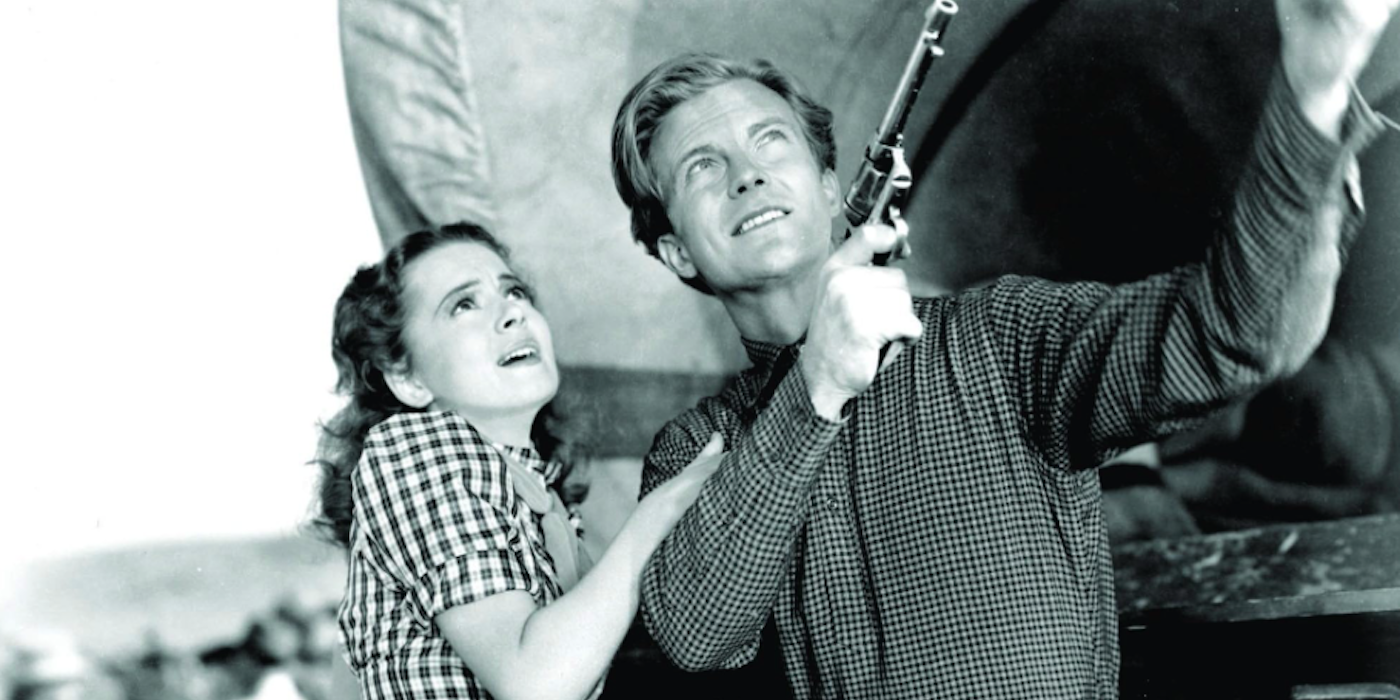
Errol Flynn’s First Western Gave Us the Genre’s Best Saloon Fight
The film’s saloon fight was a mammoth brawl, one of the largest ever filmed, and still, one of the best barroom brawls ever captured on screen.
The third chapter, “The Civil War,” directed by John Ford, is set against the backdrop of the American Civil War and provides a bridge between the stories of The Prescotts’ daughters and their children. This chapter follows Zeb (James Arness), the son of Jimmy Stewart and Carroll Baker’s characters, as he enlists and fights for the Union in the war. It also introduces John Wayne to the film. George Marshall’s “The Railroad” segment, set in the late 1860s, captures the competition between railroad lines as they carve up new territories. Henry Fonda joins the fray in this chapter, reprising his role as an American on-screen father figure, serving as Zeb’s guide in the absence of his father. The final chapter, “The Outlaws,” directed by Hathaway, is set in the late 1880s and serves as the culmination of the Prescott family’s journey as they settle in the West. We see the surviving members reflecting on their past and witnessing the emergence of a tamed West that thrives under the rule of law.
‘How the West Was Won’ Is John Wayne, Jimmy Stewart, & Henry Fonda’s Only Movie Together
Bing Crosby, the legendary multimedia star, approached MGM in 1960 with a proposition to develop a television showstopper based on photographs of the Wild West appearing in Life magazine. Alongside the project, he recorded an album of the same title, How the West Was Won, intending to donate some of the proceeds to St. John’s Hospital. MGM bought the rights to the film. The initial plan was to film six segments featuring twelve-star actors of the time, including Bing Crosby himself, Gary Cooper, and others. Cooper, who died of cancer before filming began, was replaced by Jimmy Stewart.
In the end, How the West Was Won eventually featured an A-list cast of heavyweights John Wayne, Jimmy Stewart, and Henry Fonda, alongside Singin’ in the Rain star Debbie Reynolds, Gregory Peck, and Harry Morgan, among other seasoned actors. Although John Wayne, Jimmy Stewart, and Henry Fonda do not appear in any scene together, their presence in the film is palpable.
Who Does Jimmy Stewart Play in ‘How the West Was Won’?
Jimmy Stewart is the first of the trio to appear. Unlike in his previous Westerns where his characters seemed to be in control of their destiny, like Grant McClaine in Night Passage, for which he broke his working relationship with Anthony Mann, in How the West Was Won, Stewart’s character appears somewhat lost. He portrays Linus Rawlings, a restless lone traveler in the Wild West known as “the mountain man,” in Henry Hathaway’s opening chapter “The Rivers.” Stewart portrays Rawlings prominently in this chapter, trading furs and encountering the Prescotts, who are camping before embarking on their westward journey. He immediately develops a romantic connection with Eve Prescott, one of Zebulon’s daughters.
Despite facing his struggles during his lonesome adventures, Rawlings later reunites with the Prescotts and helps them defend themselves against pirates, with whom he also has a bone to chew after they stole his “beavers”. Ultimately, smitten by love, he abandons his more adventurous life and settles down with the equally stubborn Eve. His story culminates in the John Ford-directed chapter “The Civil War,” where he represents a statistic on the human cost of the war that cemented the establishment of the U.S. Stewart felt miscast for the role, as the role was originally written for a 28-year-old, and his onscreen love interest, Caroll Baker, was significantly younger than his fifty-three years at the time of filming. This age difference is perceptible in the film, considering how energetic and wild his role demands. Nevertheless, Stewart delivers a strong performance and remains one of the most memorable characters in the film.
Who Does John Wayne Play in ‘How the West Was Won’?
As Stewart exits the screen, John Wayne enters. Wayne portrays General William Sherman, a real-life figure in the Civil War renowned for his strategic prowess. In How the West Was Won, Wayne’s character appears solely in the pivotal Battle of Shiloh, where he plays a key role in securing an improbable victory for the Union soldiers. In this battle sequence, director John Ford, with whom Wayne collaborated on a record of fourteen films, subtly questions the rationale behind the war. The scene also reflects on the individual contributions made during such historic times, with Wayne’s General Sherman providing crucial encouragement to his low-on-confidence compatriot, General Ulysses S. Grant, played by Harry Morgan. Sherman’s poignant statement, “The army is better off with you than without you,” resonates deeply not only with Grant but also with Zeb Prescott, who grapples with the same question about the meaning of war. While John Wayne’s appearance is fleeting, his presence leaves an indelible mark. Although Wayne and Stewart share the “The Civil War” segment, their characters’ narrative connection is established through Stewart’s on-screen son, Zeb. It is Zeb who saves the lives of both generals by eliminating a Confederate soldier seeking to exploit their proximity to gain personal glory.
Who Does Henry Fonda Play in ‘How the West Was Won’?
Henry Fonda joins the fray much later, portraying Jethro Stuart alongside John Stewart’s onscreen son, Zeb, who has now joined the US Cavalry. Zeb acts as a peace ambassador between the railroad construction company and Indigenous Americans. Fonda, reprising his iconic everyman persona, embodies Jethro Stuart as a humane and justice-seeking individual. Through his interactions with Zeb, Jethro guides the young cavalryman toward doing the right thing and upholding the promises made in the peace agreement with the Indigenous people. Witnessing his superior renege on these promises, Zeb experiences an internal conflict that makes him resign from his position, which fuels his character arc.
‘How the West Was Won’ Was a Technological Pioneer of Cinerama Filmmaking
One of only two films ever made using the Cinerama process, How the West Was Won was the first feature film shot with this innovative technology. The other film, The Wonderful World of the Brothers Grimm, was released in the same year. With the television industry gaining popularity, Cinerama emerged as a groundbreaking widescreen movie experience. Utilizing three synchronized projectors and a vast curved screen, it was marketed as a special theatrical event requiring reserved seats and formal attire. While the picture quality on the curved screen was stunning, converting it for smaller screens proved problematic.
During the production of How the West Was Won, filmmakers faced numerous challenges with the Cinerama technology. According to the book Take One by Unicorn Publishers, Henry Hathaway remarked, “That damned Cinerama! Do you know a waist shot is as close as you can get with that thing?” Indeed, seeing the film confirms Hathaway’s statement – close-ups are scarce. The same book quotes Henry Ford complaining about the tedious difficulty of dressing large sets for the technology’s super-wide shots. As reported in The New York Times, How the West Was Won producer Bernard Smith explained, “It is essential for our purposes that virtually the whole movie be shot outdoors. Throughout the film, one of the basic themes is to show little people against a vast country – huge deserts, endless plains, towering mountains, and broad rivers. We want to capture the spirit of adventure, the restless spirit that led these men and women across the country in the face of many difficulties and dangers.”
A more difficult problem with the technology was how it impacted filming. Filming for Cinerama was tricky because actors had to be positioned in unnatural ways, making them look out of place and disconnected from each other. This was because the final picture was made from three separate films projected together. Only when shown on a special curved Cinerama screen did the actors appear to be looking at each other and interacting naturally. On a regular flat screen, it would look like they had no eye contact.
How the West Was Won was a commercial success despite its staggering $12 million budget reported by The Wall Street Journal. The film grossed over $46 million at the domestic Box Office, and made more than $50 million worldwide, making it the second highest-grossing film of 1963. It earned eight Academy Award nominations, winning three of them. With its grandeur, How the West Was Won remains an epic classic that showcases some of the best works that Hollywood has delivered. Directed by three of cinema’s best minds, How the West Was Won also stands out as the film that had three of the best talents on-screen appearing in the same movie.
How the West Was Won is available to rent on Apple TV+ in the U.S.
Watch on Apple TV+

